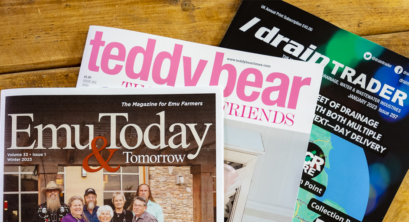Bango buys the world’s least viewed print ads to protest poor social media targeting
by Sukey Miller | 27 Sep 2023

Data shows marketers are failing at social media targeting, with only 8% of ads on popular short-form video platforms reaching their desired audience
Despite one in four marketers now using short-form videos* for advertising, only 8% of the ads shown on social video sites are relevant to users. That’s according to a new study from Bango, examining why marketers aren’t taking advantage of the targeting features offered by apps such as TikTok, Instagram and YouTube.
Following an analysis of over 5,000 paid ads on popular short-form video platforms, Bango’s study found that over 90% of ads set up by marketers were displayed to unrelated or irrelevant audiences. In the case of one user, who was explicitly interested in ‘Sports’, a total of 69 ads were shown for instant noodles.
Despite these challenges, 53% of marketers agree that short-form video platforms can be an effective source for targeting customers — when used correctly.
As Anil Malhotra, CMO at Bango explains, “TikTok, Instagram Reels and YouTube Shorts are growing in popularity among marketers, and are becoming an increasingly important part of a brand’s marketing strategy. However, the majority of marketers simply aren’t using them correctly.
“Over the last year, social media companies have launched a host of advanced targeting tools, including Behavioural and Purchase Intent targeting. These allow marketers to import data about customers’ past purchases, targeting ads directly at the people most likely to buy. Despite these advances, the overwhelming majority of marketers are still bombarding consumers with untargeted and irrelevant ads.”
Alongside the study, Bango has continued its efforts to raise awareness of poor targeting practices. After buying the world’s least viewed billboard in 2021 (claiming it was “more targeted than the average search ad”), Bango has now expanded its campaign by buying ads in the world’s least read magazines.
The full-page ads, which have appeared in Emu Today & Tomorrow magazine, Teddy Bear Times, and Drain Trader, claim that they’re still more targeted than the average social media ad.
Anil Malhotra continued, “In 2021, our Worst Ad Campaign made the point that search targeting is broken. With the Second Worst Ad Campaign we’re moving our sights onto social media. Despite the huge advances in targeting made by platforms like TikTok, Instagram and YouTube, marketers continue to ignore the tools available to them, taking a broadbrush approach to social media advertising. The result is billions of dollars of ad spend being wasted — at a time of significant budget cuts!”
In response to this problem, Bango advocates for the implementation of Audiences built from purchase behavior data. Using the targeting tools built into the social media platforms, this data can be used to target camapaigns based on what people have previously bought around the web.
Malhotra said: “Advertisers are too fixated on ‘circumstantial evidence’ to guide their social ad targeting. Even for mid and top of funnel marketing, hard evidence of purchase behavior is 10x more valuable than other signals. Paying users are hard-won, wasting money on bad targeting is easy”.
For more on Bango’s Second Worst Ad Campaign, and to view a summary of research to date visit worst-ad2.com
To find out more about Purchase Behaviour Targeting visit bango.ai
Methodology
* According to data from HubSpot
Bango’s study was conducted as an experiment using over 100 English-language social media user accounts, comparing the contents of 5,000 paid adverts with user’s registered interests. The study was supported with a survey of 300 marketers across the UK and US.
Subscribe to our newsletter
Get the latest subscription bundling news and insights delivered straight to your inbox.



